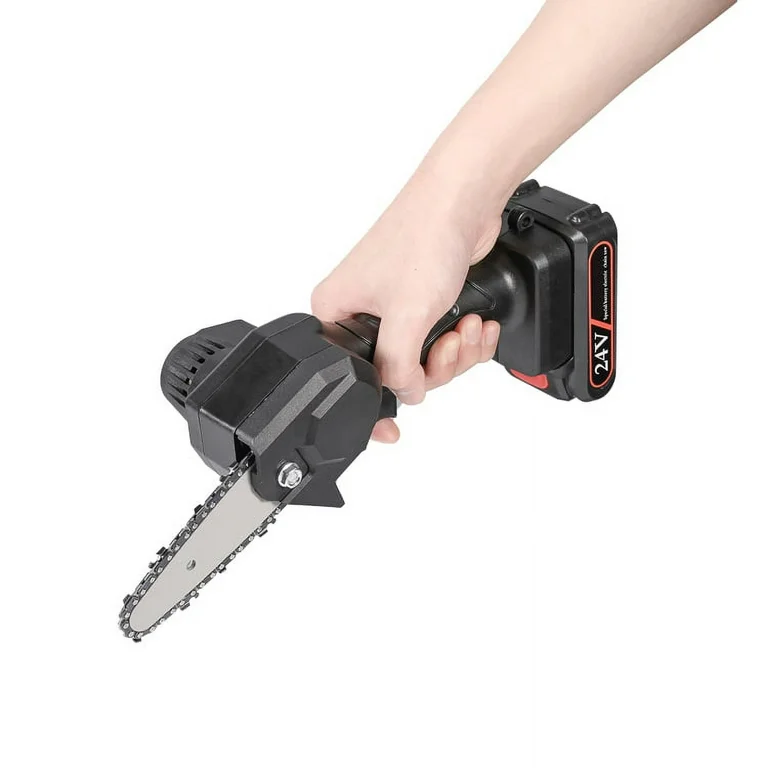
Discover Versatile Uses of a Router Power Tool
Introduction to the Router Power Tool
A router power tool is indispensable in carpentry and furniture making. This portable electric instrument assists in creating precise cuts and intricate shapes on wood and other materials.
The Components of a Router
A router consists of several key components which together facilitate its versatile uses:
- Electric Motor: Provides the power necessary to drive the cutting bits.
- Base Plate: Offers a stable, low-friction surface to glide over the material.
- Handle Knobs: Help in maneuvering and controlling the tool accurately.
- Bits: These are the cutting tools attached to the motor’s chuck that perform actual cutting tasks. They come in various shapes for different operations.
The Functionality of a Router
The router’s functionality stems from its ability to adjust the depth of cut via the motor’s height adjustment relative to the base. This flexibility allows for versatility in creating different types of cuts from grooves to intricate designs on materials. The cutting bits, which can be easily interchanged, are critical for various operations such as trimming, shaping, and hollowing out areas of woodwork. Overall, the router is a powerful tool for any woodwork enthusiast looking to achieve precision and intricate detailing in their projects.

Essential Router Operations
A router power tool shines in performing key operations that enhance woodworking projects.
Cutting Fancy Edges
The router is ideal for adding intricate and decorative edges to woodwork. Whether crafting a curvy contour on a picture frame or sculpting a sophisticated trim on a bookshelf, the router’s diverse bits shape wood with precision. For instance, to achieve an elegant beveled edge on a table, you simply select a bit with the right silhouette and guide the router along the wood’s edge. This operation transforms plain surfaces into works of art with minimal effort.
Creating Grooves and Dadoes
Grooves and dadoes are fundamental for joining pieces of wood together, especially in shelving and cabinet making. A router, equipped with a straight or dovetail bit, can cut uniform channels with ease. Adjust the router’s depth, and it carves perfect dadoes that serve as seats for shelves or connect panels. Simplifying assembly and adding strength to your creations, the router is essential for these precision cuts. Whether for aesthetic design or structural integrity, using a router ensures results that both look good and last.
Router Uses in Cabinet Making
Routers are vital in the intricate world of cabinet making. They enable precise cuts and creative designs, essential for crafting high-quality furniture. The following sections detail some of the specific uses of routers in this field.
Designing Doors and Frames
Creating stunning doors and frames is a key use for routers in cabinet making. Using various bits, routers shape edges and carve detailed patterns. This process adds aesthetic value and uniqueness to each piece. For instance, a router can create raised panels or glass fitting rebates in doors, enhancing their appearance and functionality.
Crafting Joints and Hinges
Routers excel in making precise joints and hinges, crucial for the structural integrity of cabinets. They can cut dovetails, mortises, and tenons with ease. The precision of a router ensures tight and secure joints, enhancing the durability of the cabinets. Its ability to craft complex hinge grooves also helps in seamless door operations.

Crafting With Routers in Furniture Making
Woodworkers often turn to routers for their versatility in furniture making. The tool’s precision allows for creating various features, from purely functional to decorative.
Beveled Edges and Special Profiles
Creating beveled edges gives furniture a sleek, angled finish. Routers accomplish this with special bits, shaping wood smoothly as they spin. Special profiles, like rounded corners or specific shapes, are also possible. With a router, woodcarvers achieve perfect curves and custom designs with ease, enhancing the furniture’s look and feel.
Ornamental Designs and Inlays
Ornamental designs are where routers show their artistry. They carve elegant patterns into wood surfaces, turning simple pieces into eye-catching artworks. Inlays, involving embedding different materials into the wood, are made accurate and snug with routers. This advanced capability allows for intricate detailing that adds to the richness and value of the furniture.
Home Improvement Projects Using Routers
Home improvement projects often call for precision and custom detailing, which is where the router power tool stands out.
Enhancing Shelving and Storage
When optimizing home storage, a router power tool can be a game-changer. Routers enhance shelving units by adding decorative edges and tailored grooves for brackets and supports. Here’s what a router can do:
- Custom Edging: Transform plain shelves with ornate edges for a refined look.
- Slot Cutting: Create precise slots for dividers, making organization a breeze.
- Fit Adjustments: Rout out areas for custom fittings, ensuring a perfect fit for storage components.
Weather Stripping and Window Grooves
Maintaining a home’s comfort involves keeping out drafts, and routers assist in weatherproofing efforts:
- Groove Cutting: Routers create the exact grooves needed for weather stripping around doors and windows.
- Seal Recesses: They can carve out recesses for seals that insulate against the elements.
- Window Detailing: Beyond weatherproofing, routers also design decorative grooves on window frames, enhancing the home’s charm.
Employing a router power tool for these tasks not only increases efficiency but also elevates the quality and durability of your home improvements.

Advanced Techniques for Router Power Tools
Router power tools unlock advanced woodworking techniques that increase craftsmanship levels.
Working with Circles and Ovals
Creating circles and ovals with precision is where a router shows its prowess. The router allows for:
- Smooth Curves: Achieving round shapes without jagged edges.
- Perfect Circularity: Ensuring circles are exact in diameter.
- Even Inlays: Making circular inlays fit neatly, adding elegance to the piece.
A template or jig can guide the router, allowing it to cut flawless arcs and loops.
Routing for Precision and Complex Shapes
For exact cuts and complex shapes, a router is indispensable. It enables:
- Intricate Detailing: Routers chisel tiny features with high accuracy.
- Complex Patterns: They carve patterns too detailed for other tools to handle.
- Crisp Corners: Make tight or rounded corners with uniformity.
With the right bit and steady control, a router transforms tough projects into masterpieces.
Safety and Maintenance Tips
Ensuring safety and maintaining your router power tool is crucial for its longevity and performance. Below, we outline important guidelines.
Proper Handling and Operation
Safety comes first when using a router power tool. Here’s how to handle it correctly:
- Read the Manual: Always start by reading the manufacturer’s instructions.
- Check the Bits: Before use, inspect bits for sharpness and damage.
- Secure Materials: Clamp down the wood or materials to prevent unwanted movement.
- Use Safety Gear: Wear eye and ear protection during operation.
- Maintain Control: Hold the router firmly with both hands and keep your body stable.
- Power Off: Always switch off the tool before changing bits or making adjustments.
Following these steps helps prevent accidents and ensures a clean, precise cut.
Keeping Your Router in Top Condition
A well-maintained router delivers the best results. Keep your tool in top shape by:
- Regular Cleaning: Remove dust and debris from the tool after each use.
- Lubricate Moving Parts: Apply lubricant to the motor shaft and any moving components.
- Check the Power Cord: Look for frays or damage in the cord to avoid electrical hazards.
- Store Properly: Keep the router in a dry place and cover it to protect against dust.
Routine maintenance extends the tool’s life and ensures it’s ready for your next project. With these tips, your router power tool will stay as efficient and reliable as the day you bought it.

Conclusion
In conclusion, the router power tool is an indispensable asset for both professional woodworkers and DIY enthusiasts alike. Its versatility allows users to create intricate designs, smooth edges, and precise joints in a variety of materials, making it ideal for furniture construction, cabinetry, and decorative molding. As we’ve explored, the router can be equipped with different bits to perform a wide range of tasks, from hollowing out areas to creating eye-catching profiles.
Moreover, advancements in technology have made routers more user-friendly and efficient, integrating features like variable speeds and plunge capabilities that enhance precision and control. This tool not only elevates the quality of craftsmanship but also expands the creative possibilities for projects, enabling woodworkers to push the boundaries of their artistry.
For anyone looking to enhance their woodworking skills, investing in a router can be a transformative decision. Whether you’re an experienced craftsman or just beginning your woodworking journey, mastering the router will open up a new realm of creative opportunities. Embrace the potential of this versatile power tool, and let it inspire you to craft exceptional pieces that showcase your personal style and creativity. With practice and the right techniques, the router will undoubtedly become a reliable companion in your woodworking endeavors, helping you bring your visions to life with precision and flair.

